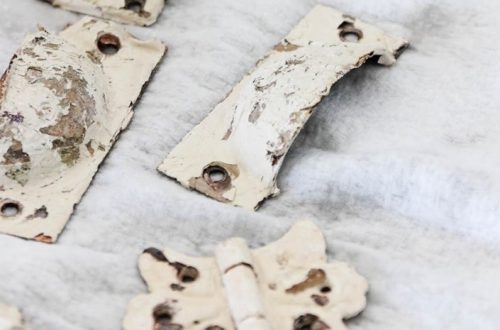Part 1: History and Background of Beakers with Ibex Motifs
Origin and Distribution:

Beakers with ibex (wild goat) motifs are a type of ceramic vessel from the ancient Near East. These unique artifacts have a specific association with the area of modern-day Iran and western Central Asia. Archaeologists have found these artifacts in archaeological sites dating back to the 4th millennium BCE. They offer valuable insight into the artistic and cultural achievements of early civilizations in the region.
Cultural Significance:
The ibex motif is commonly depicted in a stylized manner on these beakers. It holds immense cultural significance in the prehistoric societies of the Near East. It is believed to have symbolized strength, agility, and vitality. These attributes were revered and celebrated in the communities of that era. Understanding the symbolism behind these motifs provides a window into the beliefs and values of ancient cultures and their reverence for nature and wildlife.
Part 2: Characteristics and Techniques
Iconic Motifs:
Beakers adorned with ibex motifs are distinguished by their unique and elaborate ornamentation. They showcase intricate and carefully crafted depictions of ibexes in various poses and settings. The motifs often employ bold, curvilinear lines and geometric patterns, reflecting the artistic mastery and meticulous attention to detail of the ancient artisans responsible for their creation. These representations of ibexes are characterized by their stylized and expressive nature, conveying the skill and creativity of the craftsmen who meticulously crafted them. The use of bold lines and geometric designs not only showcases the artisans’ technical expertise but also highlights the cultural and symbolic significance of the ibex within the context of the ancient society. These motifs serve as a testament to the artistic sophistication and aesthetic sensibilities of the ancient civilizations, offering a window into their rich cultural heritage and artistic traditions.

Ceramic Technique:
These beakers are typically crafted using a specific ceramic technique, known as “painting-on-gypsum.” This process involves applying a mixture of natural pigments and gypsum to the surface of the vessel. It creates a durable and visually striking design. The use of this technique indicates the advanced skill and knowledge of pottery production possessed by the ancient societies that crafted these artifacts.
Part 3: Archaeological Significance and Interpretation
Ritualistic Function:
The discovery of beakers featuring ibex motifs in funerary contexts has led to speculation about their potential ritualistic significance. Archaeologists and historians believe that ancient people may have used these vessels in ancient funerary rites and ceremonial practices. They possibly served as offerings or symbolic items with spiritual importance in burial traditions. The presence of these vessels in such contexts suggests a deeper cultural and ritual significance. This offers insights into the religious and ceremonial practices of ancient civilizations and the role of symbolic objects in their belief systems.
This interpretation underscores the importance of these artifacts in understanding the rich tapestry of ancient rituals and traditions. It sheds light on the spiritual and cultural dimensions of the societies that created and used them.
Social and Cultural Context:
The presence of beakers with ibex motifs in archaeological contexts provides significant insights into the social and cultural dynamics of ancient Near Eastern societies. The intricate motifs and ritualistic associations of these artifacts offer valuable clues about the religious, symbolic, and communal aspects of life in these early civilizations.
Studying these objects in their archaeological context helps researchers gain a deeper understanding of the complexities of belief systems and social structures during that time.

The presence of these beakers suggests their integral role within these ancient societies, illustrating the importance of symbolic and ritualistic practices in their daily lives.
Through this lens, the study of beakers with ibex motifs enriches our understanding of the spiritual, cultural, and communal dimensions of ancient Near Eastern civilizations, offering valuable insights into their belief systems and societal frameworks.
Part 4: Preservation and Legacy
Preservation Efforts:
Preservation of beakers with ibex motifs is crucial in safeguarding these artifacts for future generations. Ongoing efforts in archaeological conservation and heritage management aim to protect and preserve these valuable objects. By employing specialized techniques and technologies, such as controlled environmental conditions and conservation treatments, these efforts ensure that these artifacts continue to provide valuable insights into the cultural heritage of the ancient Near East. Additionally, educational initiatives and public outreach programs raise awareness about the significance of these artifacts. These initiatives foster a sense of appreciation for ancient cultural heritage.
Through these preservation endeavors, future generations will have the opportunity to study and appreciate these artifacts. They will gain a deeper understanding of the artistic, cultural, and historical legacies of the ancient Near East. By ensuring the longevity of these artifacts, we can preserve and share their cultural and historical significance for years to come.
Legacy and Influence:

The legacy of these beakers reaches far beyond their historical and archaeological significance. It impacts and inspires contemporary artists, scholars, and enthusiasts. The ibex motifs have aesthetic allure and symbolic depth, continuing to captivate the imagination of people in modern times. They illustrate the enduring potency of ancient art to transcend across various periods and cultures. Contemporary artists often draw inspiration from these motifs. They infuse them into their works to evoke the mystique and significance associated with the ibex. Scholars and enthusiasts continue to explore the symbolic richness of these motifs. They unravel their cultural and historical implications and contribute to ongoing discussions about their profound significance. The enduring legacy of these beakers influences diverse creative and scholarly pursuits. It highlights the enduring relevance of ancient art and its capacity to resonate across time and cultures. It illustrates its timeless and universal appeal.

In conclusion, the discovery and study of beakers with ibex motifs offer a fascinating glimpse into the artistic, cultural, and spiritual dimensions of the ancient Near East. These artifacts provide valuable insights into the craftsmanship and symbolism of early civilizations. They also serve as enduring testaments to the enduring legacy of ancient art and culture. Understanding the history, characteristics, and archaeological significance of these beakers enriches our understanding of the diverse and sophisticated cultures that thrived in the ancient Near East. These cultures left an indelible mark on the development of human civilization.


